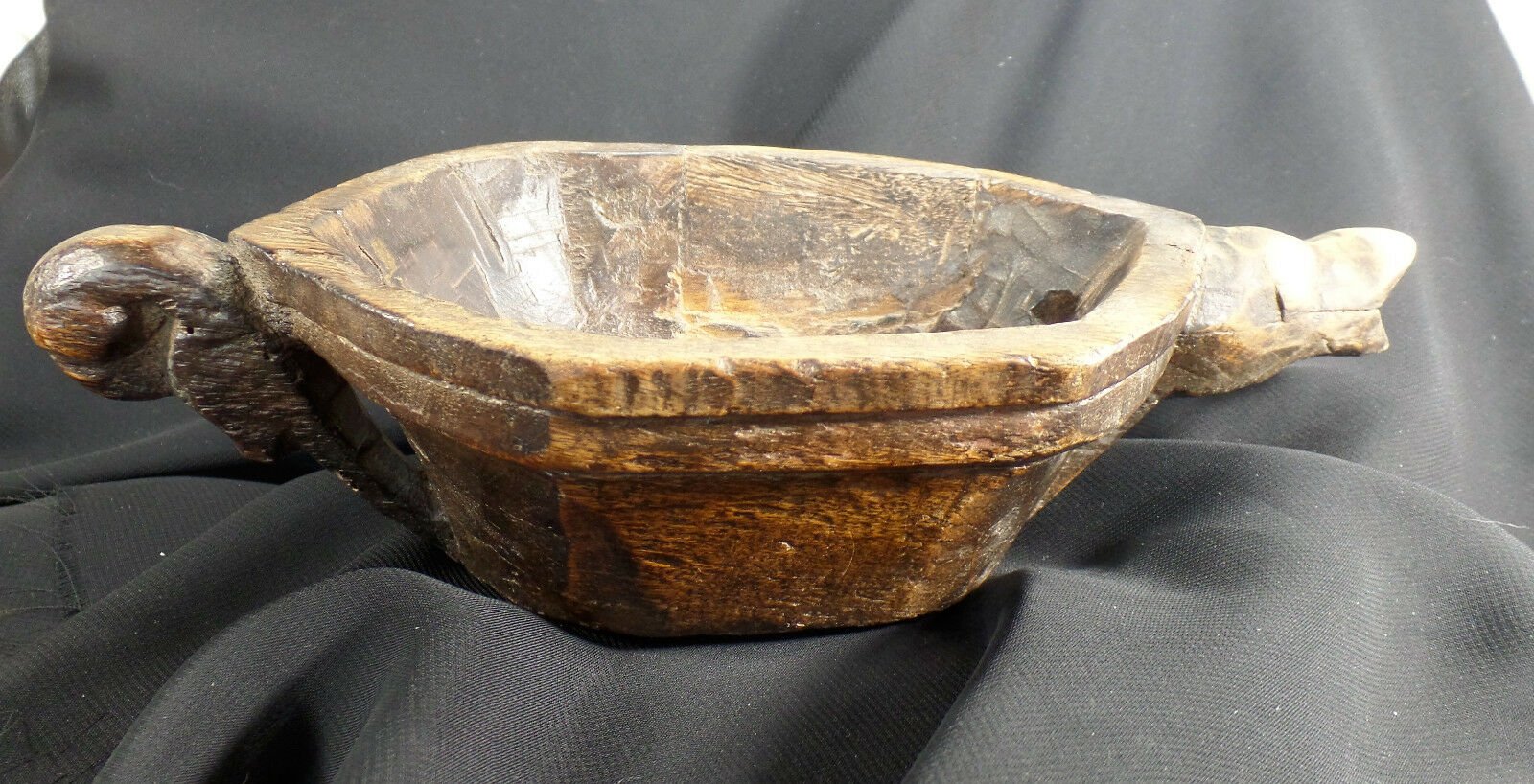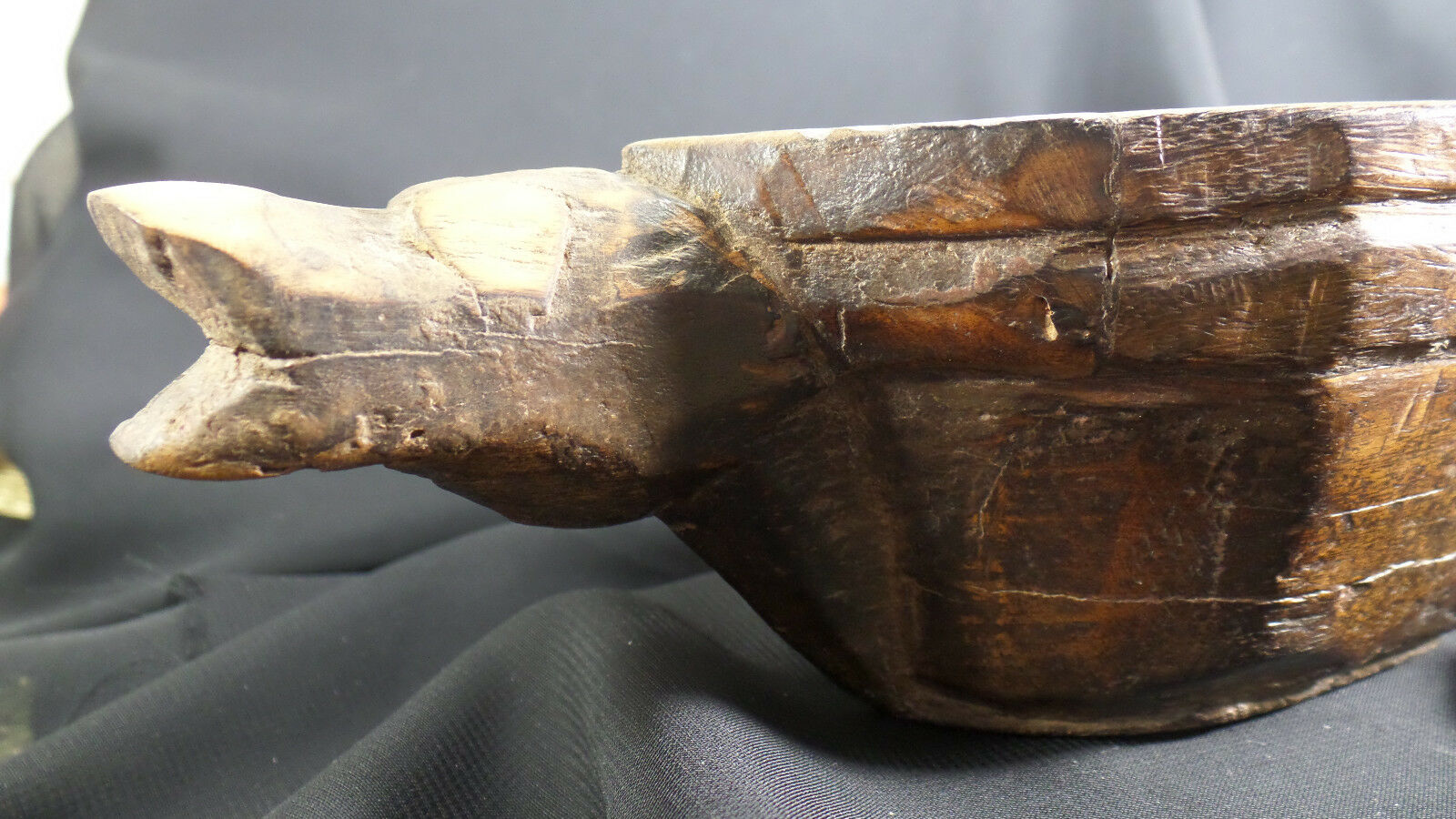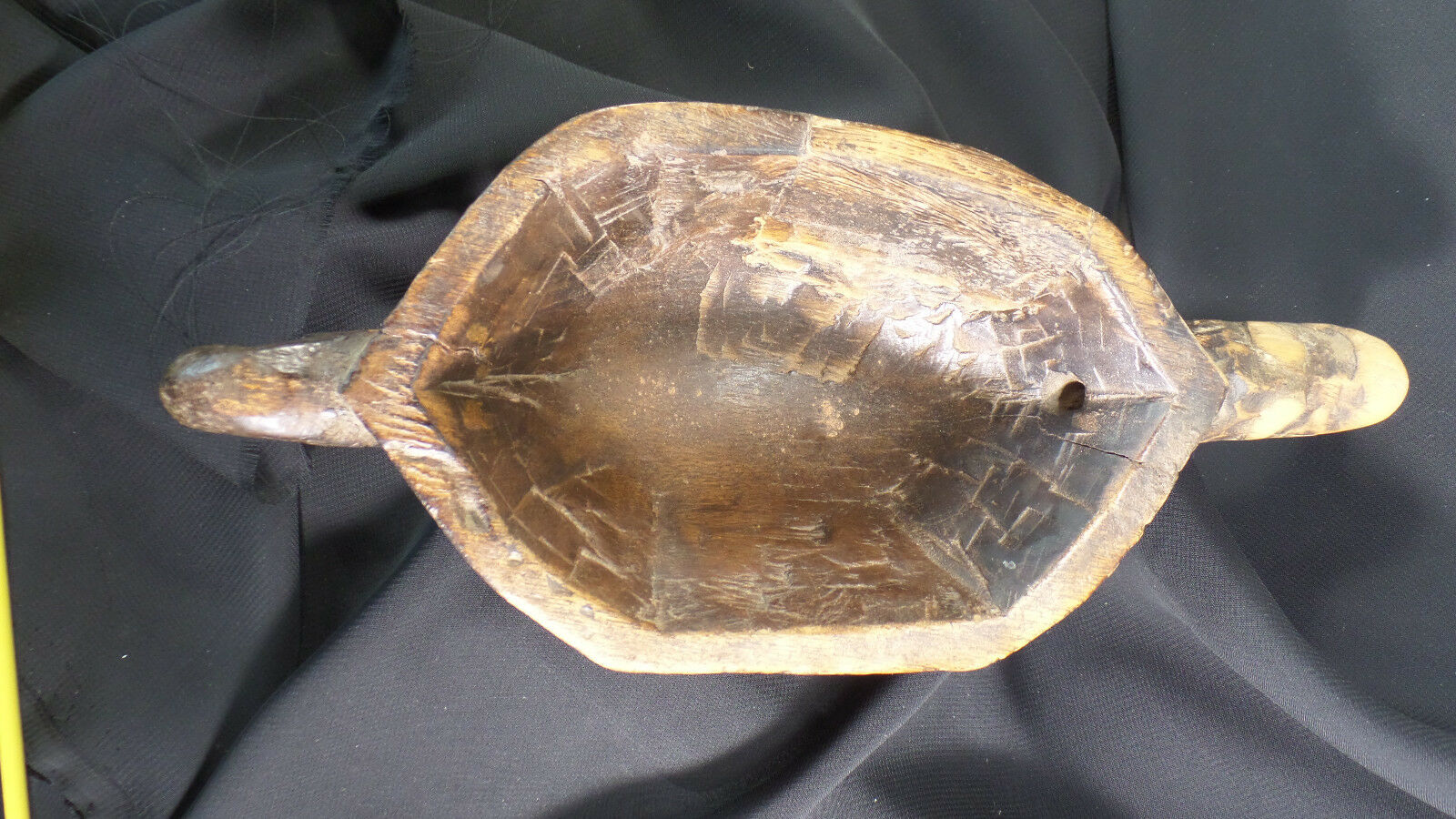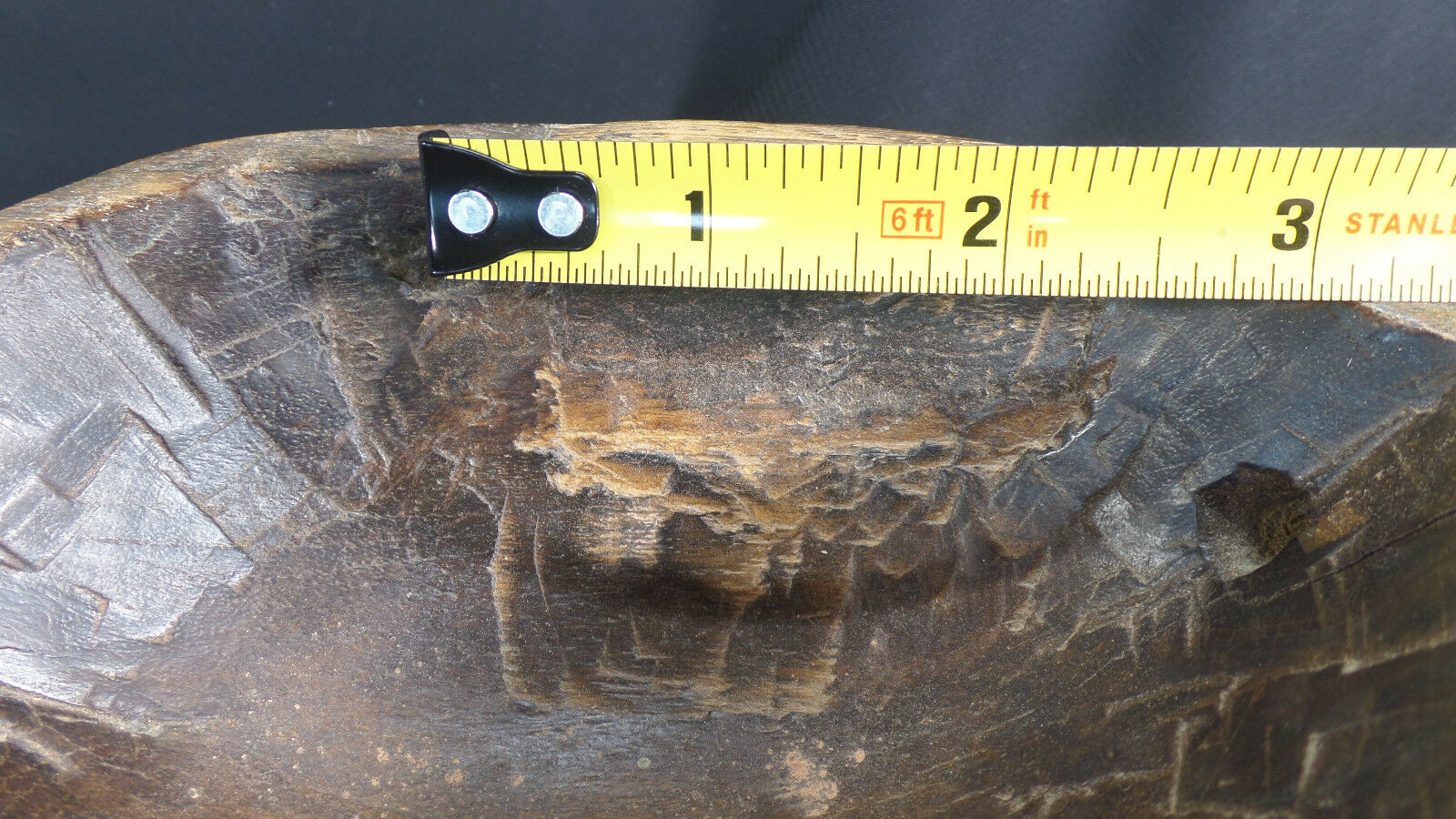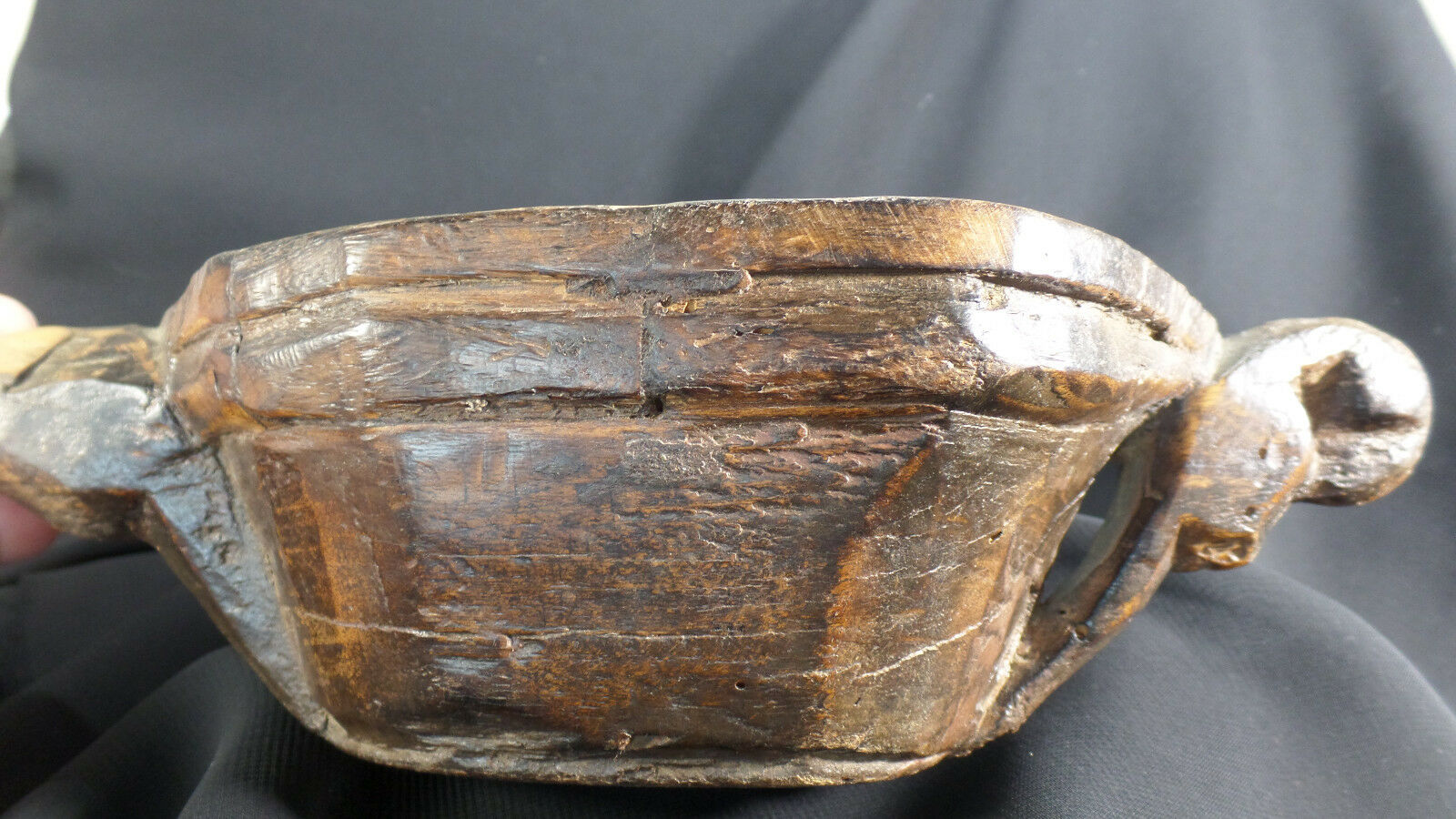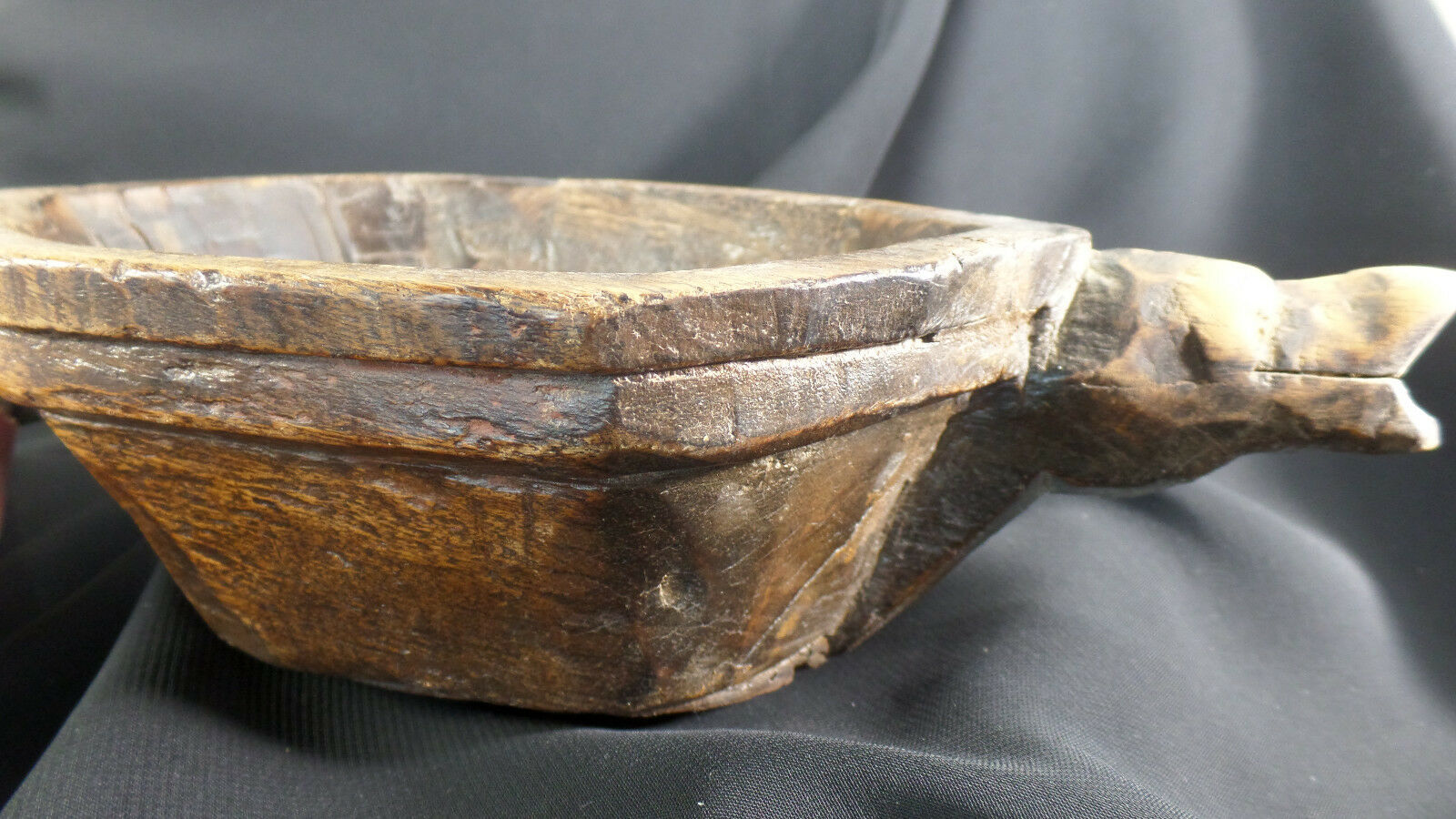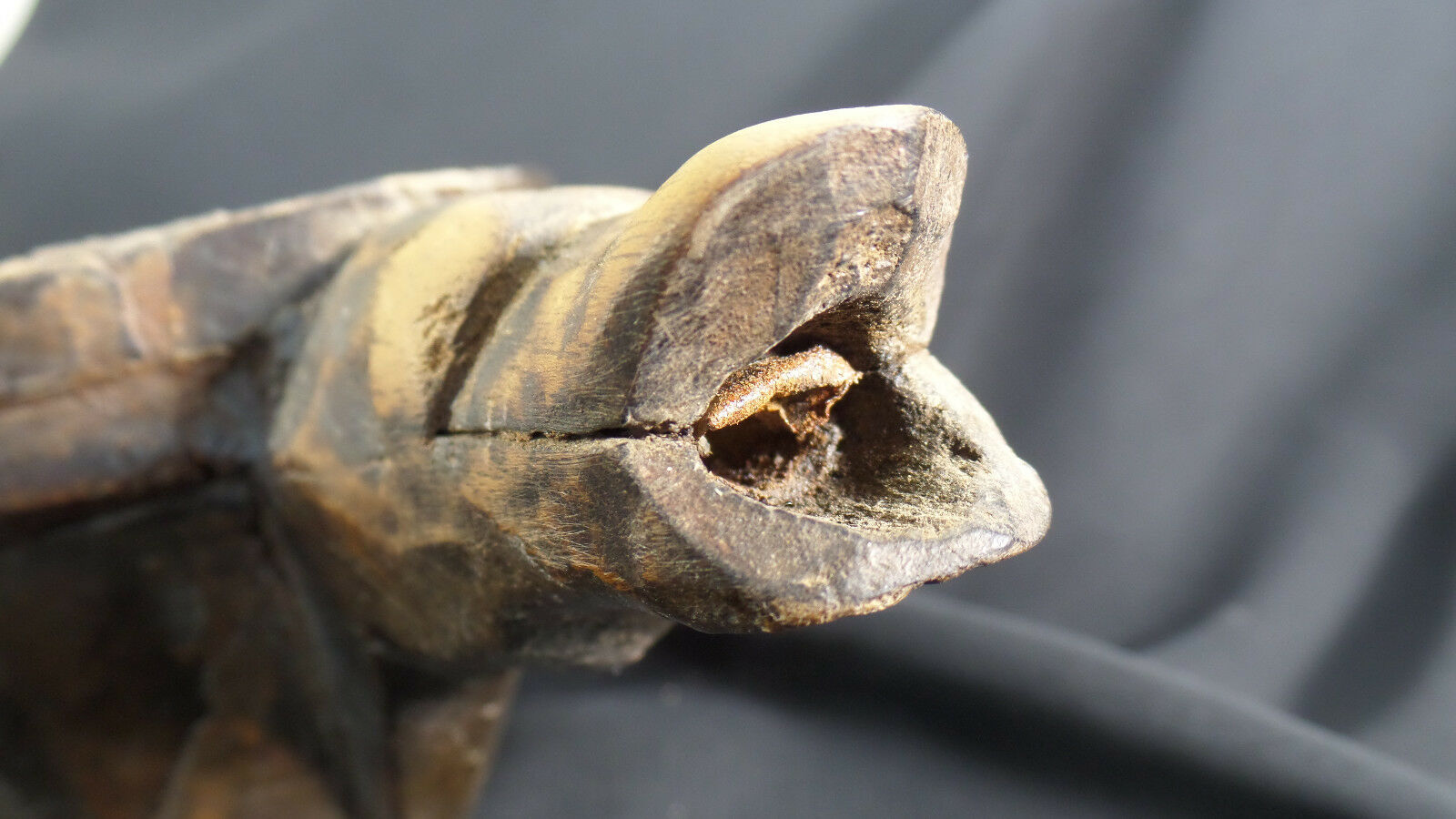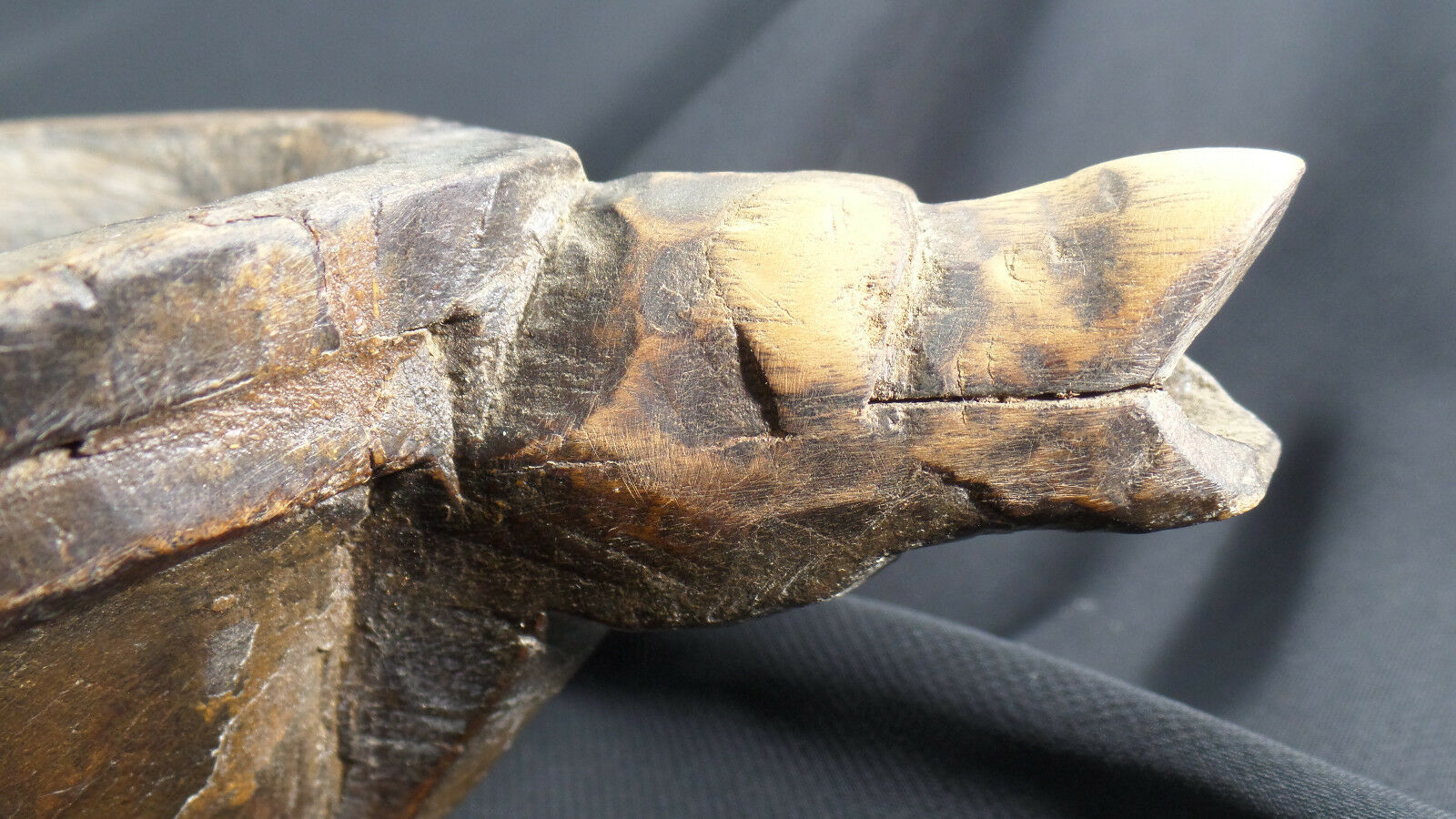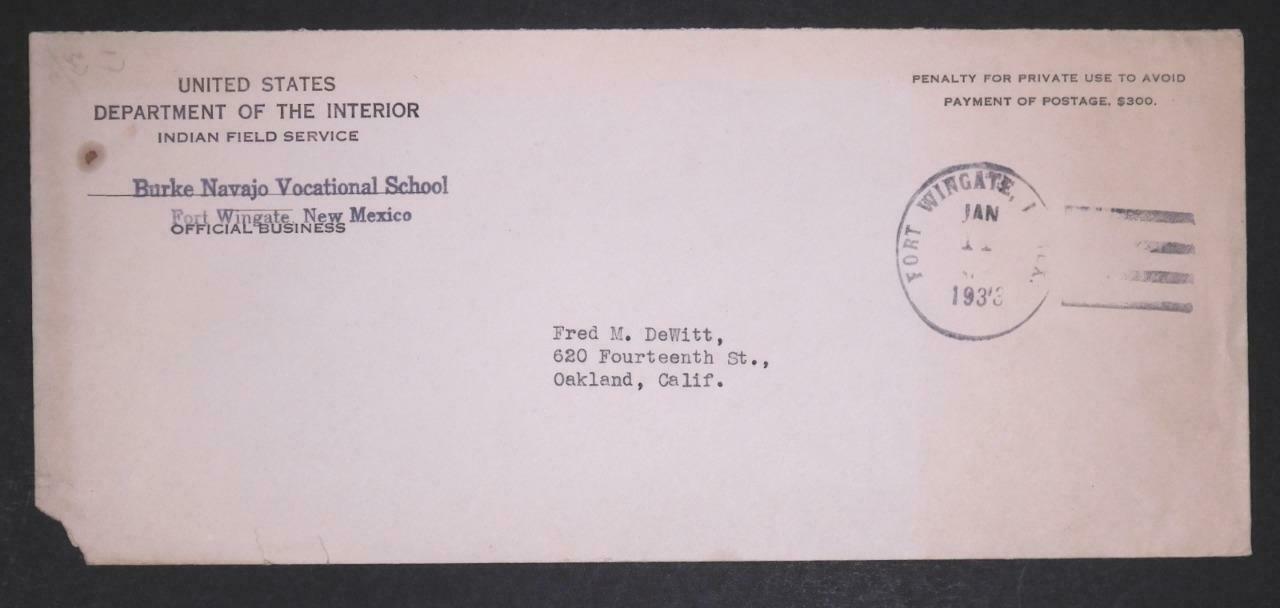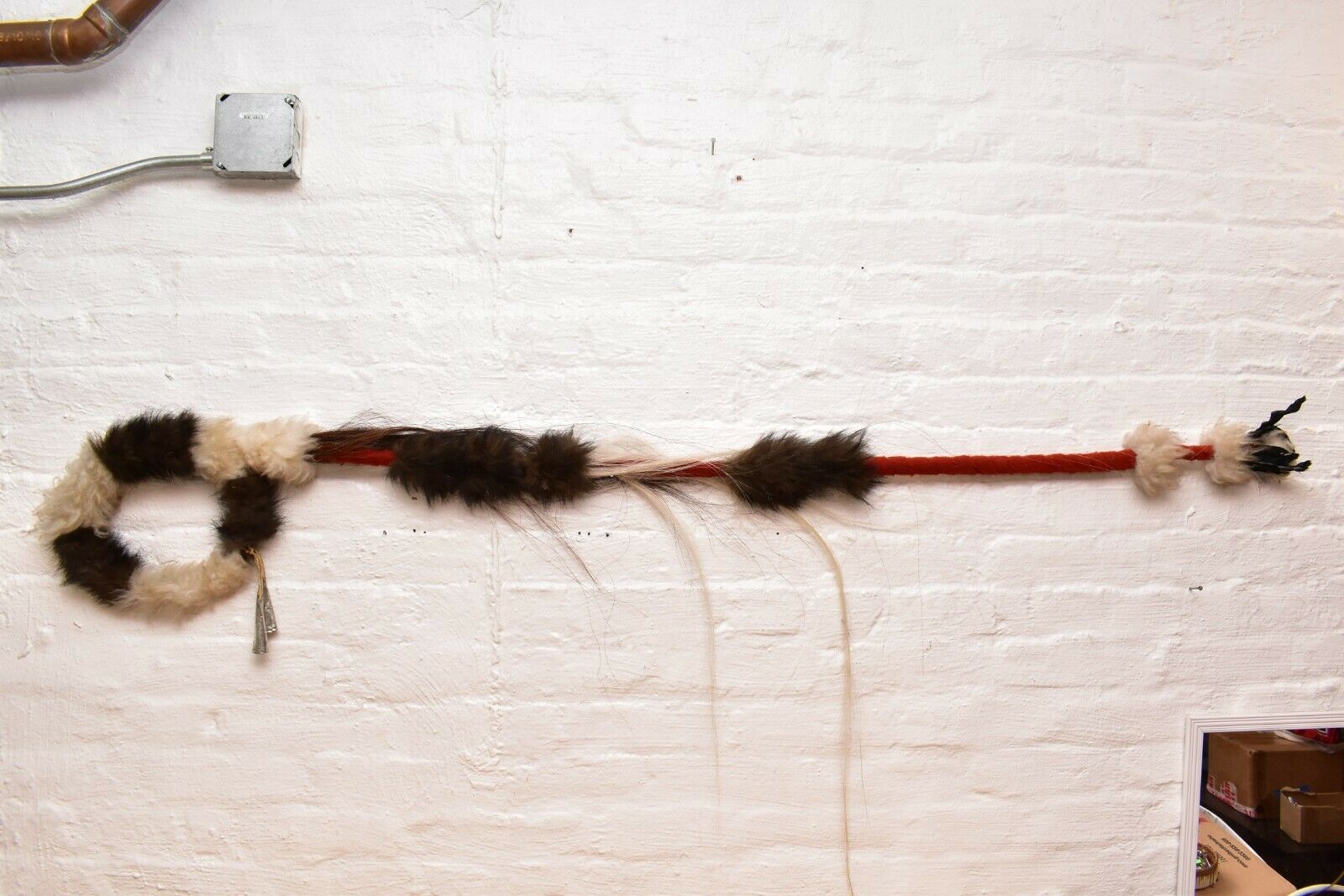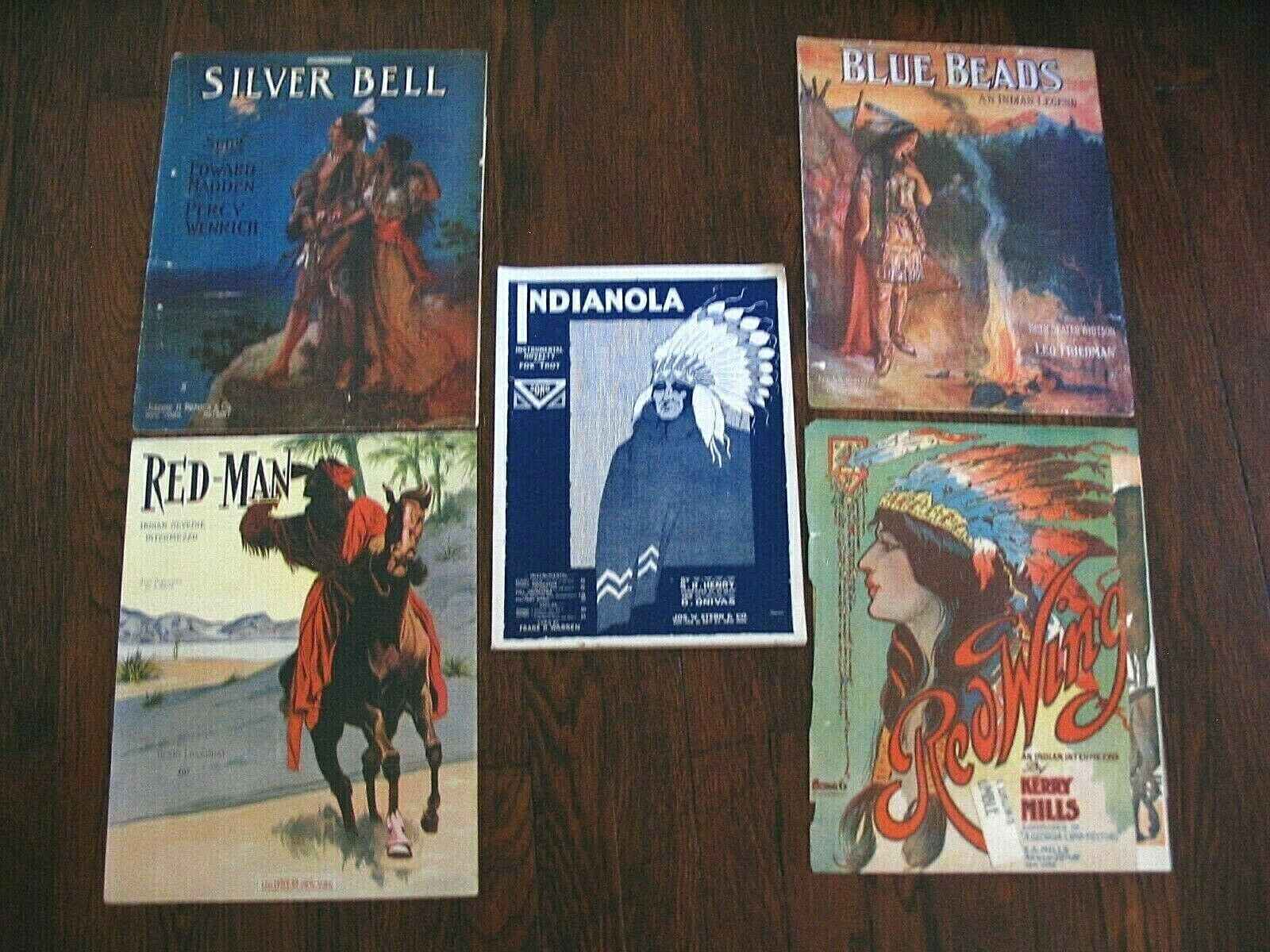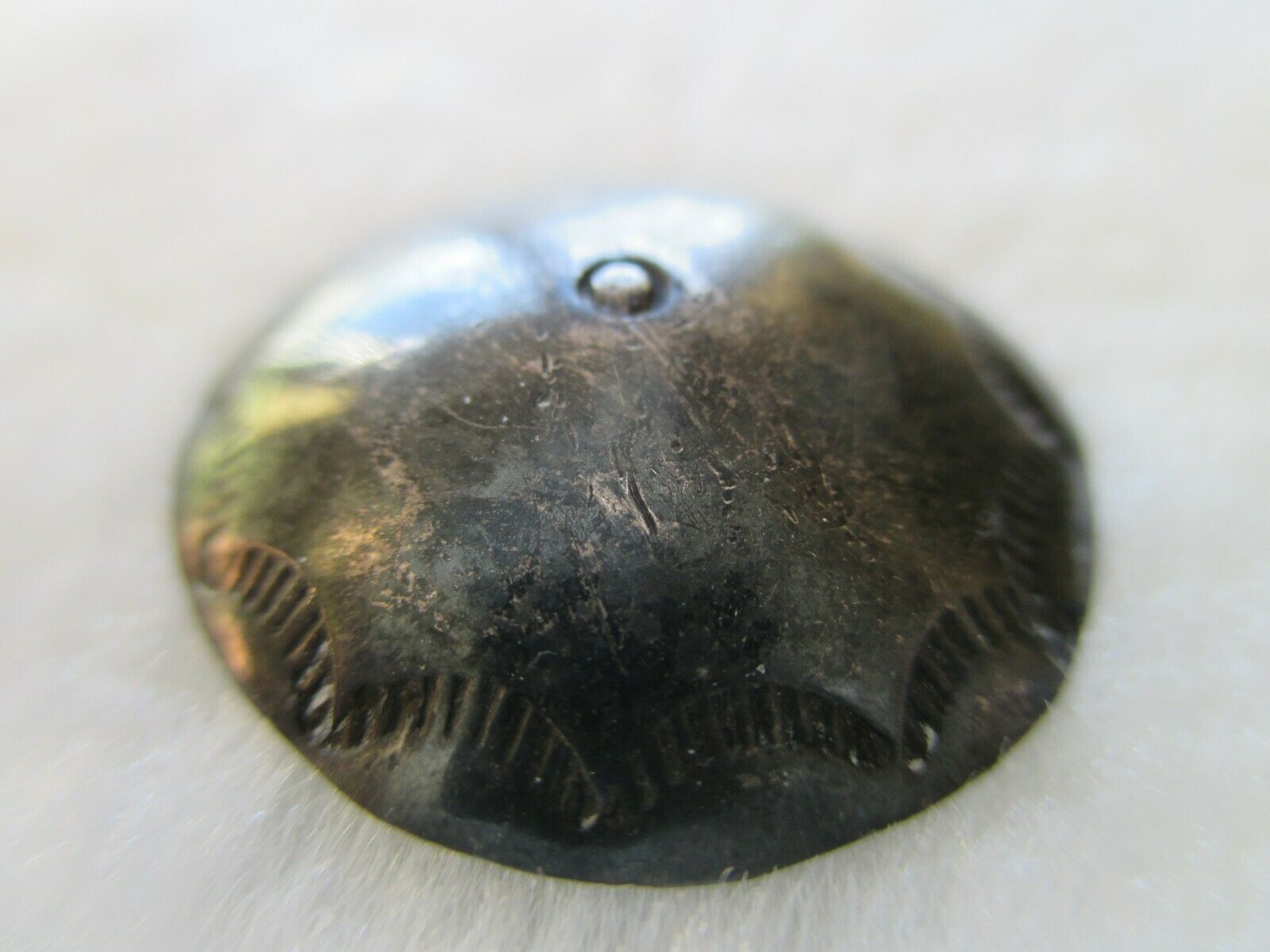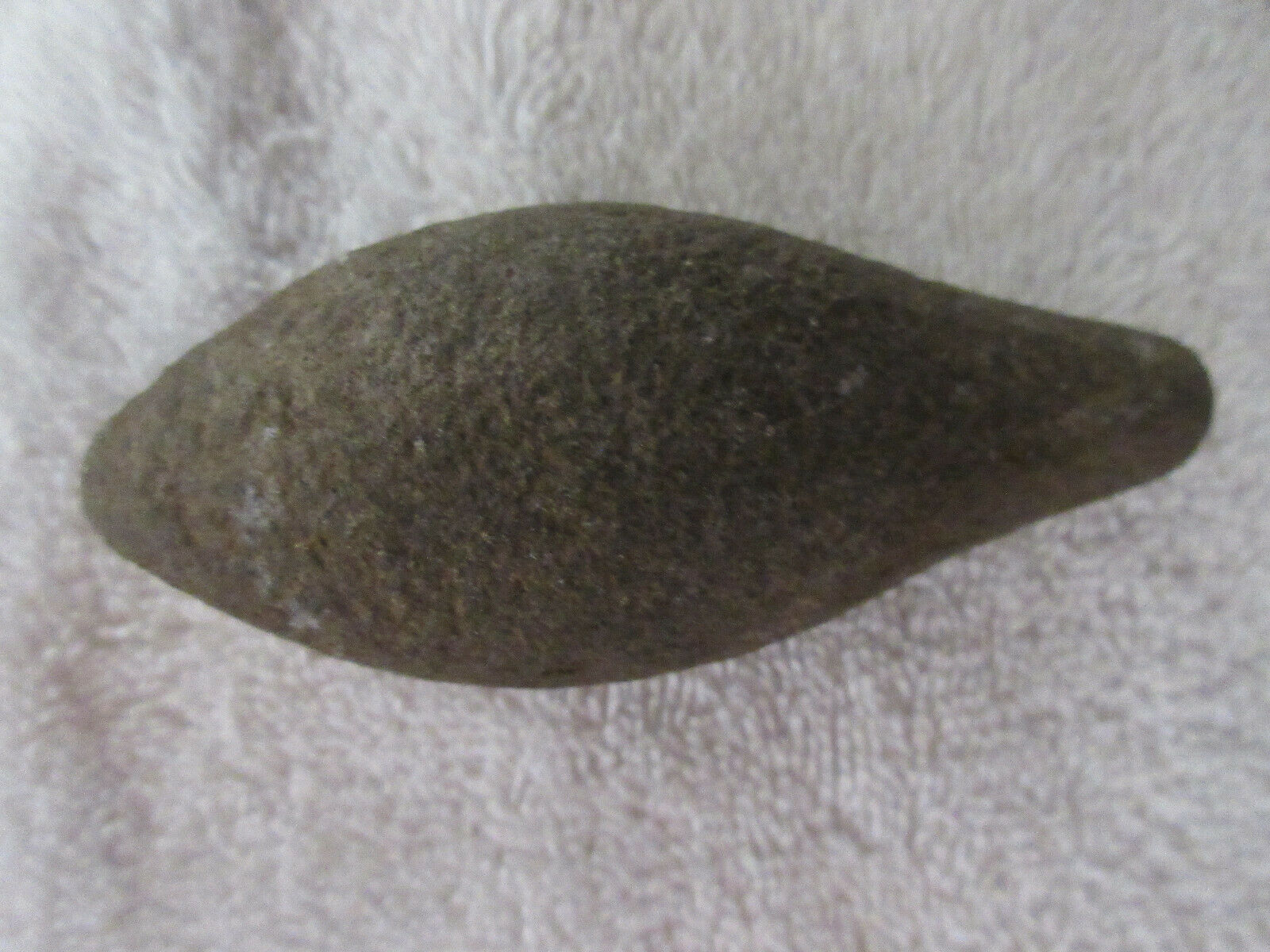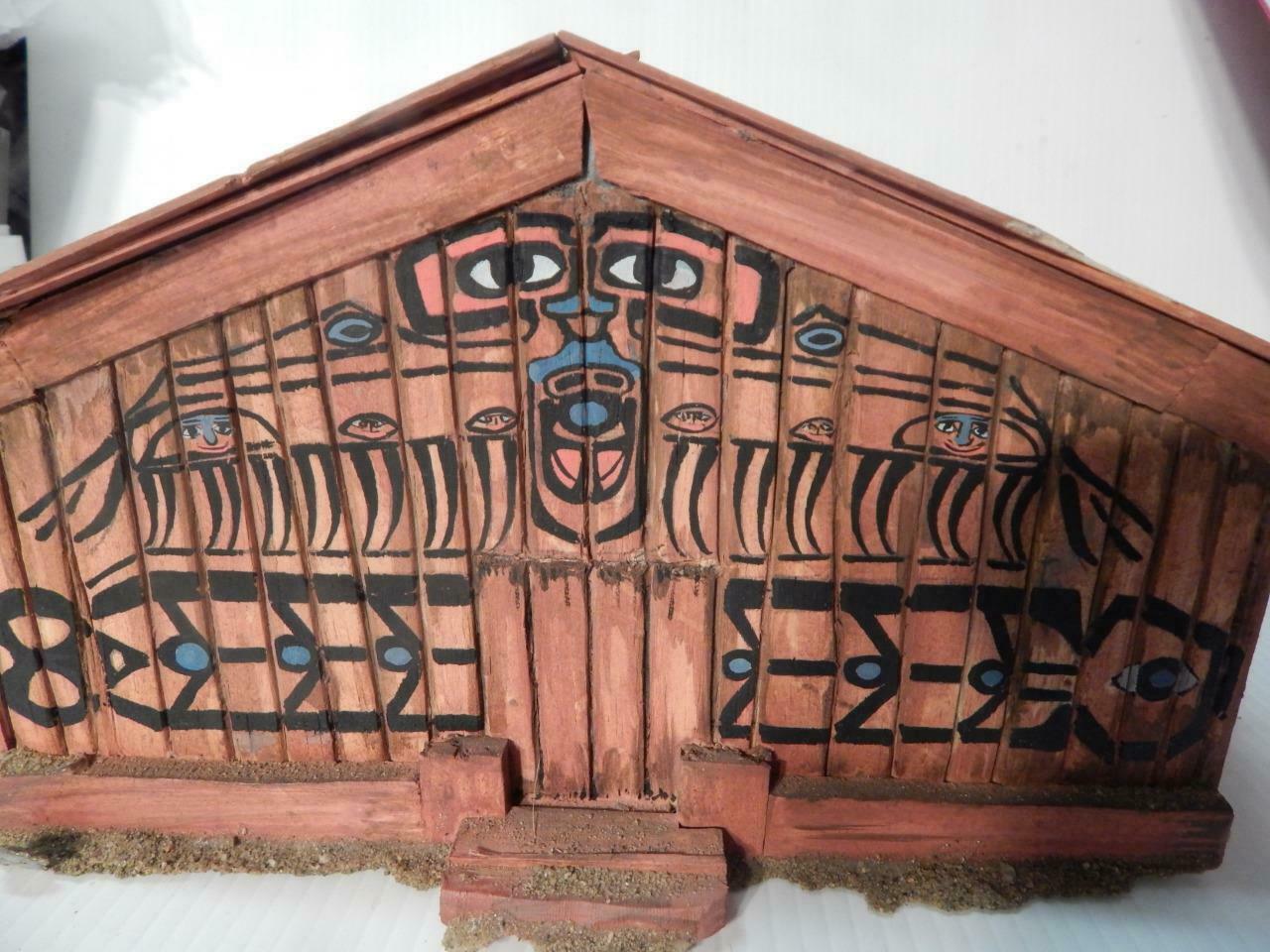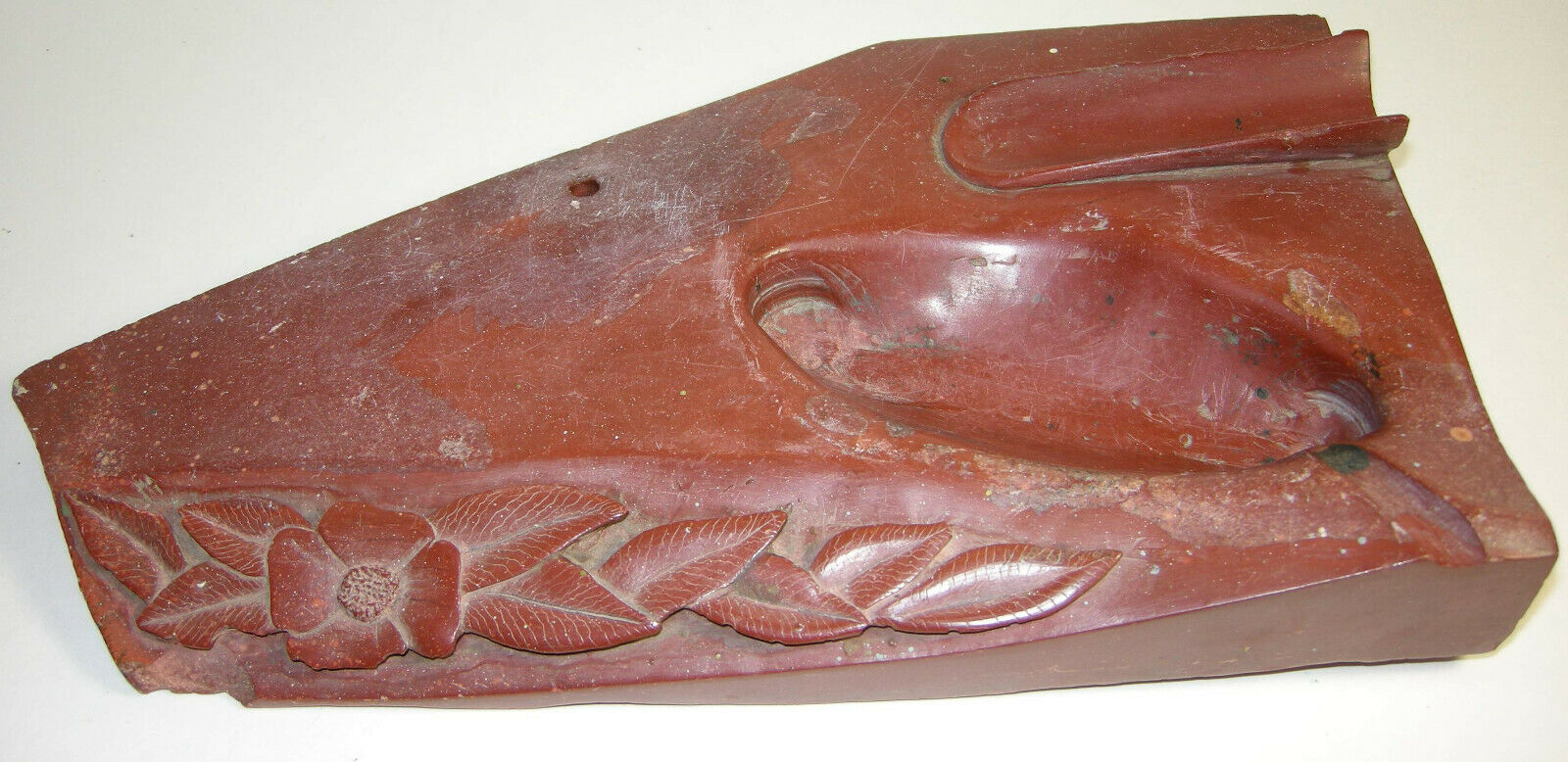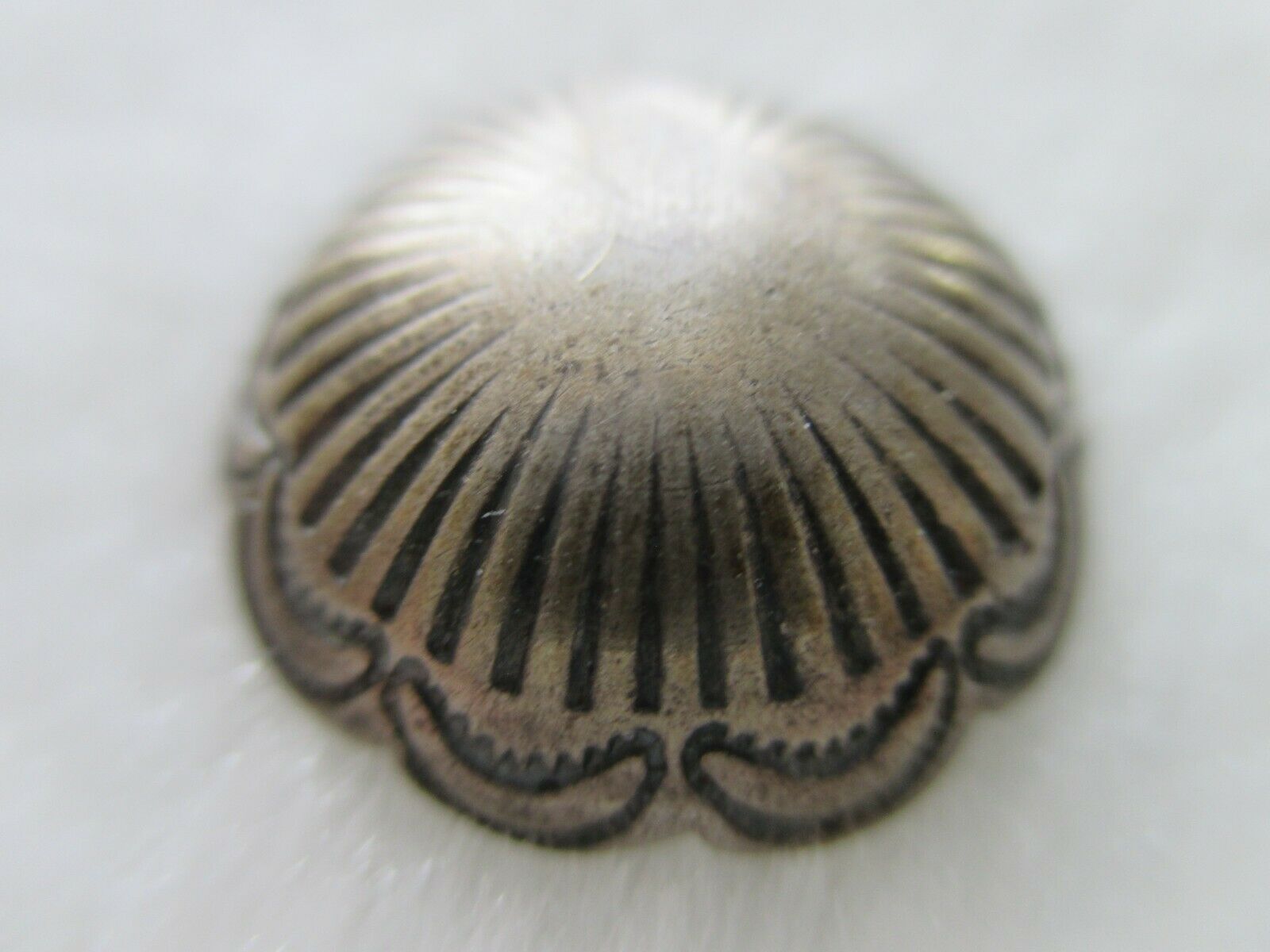-40%
X-RARE Northwest Coast RAVEN Grease Bowl 1800s Suquamish, Bainbridge Island, WA
$ 21700.8
- Description
- Size Guide
Description
Houghton USAAncient Art, Antiques, & Fine
Collectibles
Raven Clan Grease Bowl
Pacific Northwest Coast Native American
Suquamish Tribe/Puget Sound/Salish Sea
Find Location: Bainbridge Island, WA
c. 1750—1850
eBay Note:
I certify that this antique grease bowl
was reportedly traded for on Bainbridge Island, WA,
with the owner's permission
in the 1800s.
Suquamish Tribe Raven Grease Bowl
Estimated Date: 1750—1850
Find Location: Northwest Coast, USA, BAINBRIDGE ISLAND, WA, 19
th
Century Find
Approximate Measurements:
·
Length:
9.20”
·
Width:
3.80
·
Height:
2.23”
·
Weight:Â 9.3Â oz. (265 gr)
This incredible Suquamish Grease Bowl has the powerful Northwest Coast clan figure of a Raven carved into it.
The Suquamish believed that animal figures like the Raven carved into objects made the bowl itself come alive with protective powers against evil spirits who were thought to dwell everywhere.
The fierce, open mouth of the Raven was purposefully carved to protect and empower those who used this bowl from evil spirits.
It is a very powerful and spiritual piece!
On the inside of this grease bowl, there is a four-legged animal crudely carved into the side with what appears to be a knife.
The animal is about 2” long and perhaps may be a fox or coyote, as he appears to have a long, bushy tail.
Look carefully at photos # 4-5 and you can see the image of the animal running to the left with four legs.
It is perhaps a clan animal spirit of the Suquamish clan member that once owned this bowl.
There also appears to be a name or symbol carved into the underside of the base.
It is possible that the non-native owner carved his/her name into the bottom during the 1800s.
See photos 10-11.
During feasts and celebrations, dried fish dipped in grease/oil was considered a delicacy. The edible grease/oil mixture was held in small bowls like this one made of wood or sometimes of mountain sheep horn specially carved and shaped for this purpose.
This very early, 19
th
century Grease Bowl is rather crudely carved and still shows the deep chisel marks that are typical of very early of antique bowls that were created from 1750—1850.
Very old examples of grease bowls are
EXTREMELY RARE
and only a few are known to exist in Native American museums and fine private collections.
Estimated appraised value for this
EXTREMELY RARE
Suquamish Grease Bowl with provenance to the Suquamish Tribes living on Bainbridge Island, WA, is 0,000--5,000!
PROVENANCE/HISTORY
This fascinating wooden Grease Bowl carved into the shape of “The Trickster Raven” came from a very old Pacific Northwestern collection of artifacts from the Puget Sound area. The entire estate collection was obtained decades ago from the late Mrs. Henrietta Swanson’s relatives, whose family had early Seattle / island connections.
Her descendants stated that the original collector had told Mrs. Swanson that their great grandfather acquired it in a trade on Bainbridge island around the late 1890s.
The style of carving and the patina of the wood suggests that it was made decades or perhaps a century before.
This Raven Grease Bowl effigy shows a fierce, open-beak Raven at one end, with his curled tail along the opposite end.
Inside the open beak, there are still remnants of dried grease.
There is a single hole that was drilled from the mouth of the Raven to the inside of the bowl.
The Raven’s shows ware on his lightly discolored, almond-shaped eyes and snout.
His gapping, open mouth gives this piece a fierce and rather creepy perspective, as the Raven was thought to scare away Evil Spirits.
On the inside of this grease bowl, there is a four-legged animal crudely carved into the side with what appears to be a knife.
The animal is about 2” long and perhaps may be a fox or coyote, as he appears to have a long, bushy tail.
Look carefully at photo # ? and you can see the image of the animal running to the left with four legs.
It is perhaps a clan animal spirit of the Suquamish clan member that once owned this bowl.
Minor dings, surface cracks, abrasion marks, grease/oil stains are consistent with age and heavy use over centuries. Deep chisel cuts are especially evident on the inside of the bowl.
A very early and RARE wooden artifact from the pre-white settler indigenous population of the island/region.
DETAILS
This incredible Suquamish Grease Bowl has the powerful clan figure of a Raven carved into it.
The Suquamish believed that animal figures like the Raven carved into objects made the bowl itself come alive with protective powers against evil spirits who were thought to dwell everywhere.
The fierce, open mouth of the Raven was purposefully carved to show the Raven protecting and empowering those who used this bowl from evil spirits and harm.
It is a very powerful and spiritual piece that is museum quality!
The Suquamish carvers laboriously worked native cedar into the elegant shapes of grease bowls. Totemic design of a Raven’s head and tail were then carved onto the exterior surface of the two ends. This grease bowl is very thick and robustly carved.
Although fish was the staple food of Suquamish People, the surrounding forested mountains supported a wide variety of small and large game.
Northwest Coast Grease Bowls
Grease bowls were made by the early tribes that inhabited the Great Northwest Coast.
They contained edible oils that were used as an accompaniment to the dried fish or meats that were served during feasts and potlatch celebrations on the Northwest Coast. Grease is an adopted English word used to indicate eulachon or candlefish oil, rendered in large wooden vats from small river-run fish in the early spring, or seal oil, rendered from the thick blubber that insulates the various coastal species of seal from the cold northern Pacific waters.
Smaller bowls of this kind were often personal property, used by individuals or family groups on a daily basis, while the larger ones were used for bigger gatherings as serving vessels, from which these oils were ladled into smaller bowls.
This bowls represents a raven’s head with a wide-open mouth, the interior of which leads to the inside of the bowl.
There are a small number of other bowls with this basic image, though few of these appear to be as early as this example.
The roughly hewed wood suggests this bowl was executed in a very early style, indicating a date of origin that could span from circa 1800 to well back into the eighteenth century. The broad, thick form-lines and deep, carved-out bowl are typical of objects that are documented to the last quarter of the eighteenth century, and many of those were undoubtedly created well before their documented date of collection by Euro-Americans—in this case in the late 1800s.
This archaic-style design work is usually attributed primarily to the Tlingit or Suquamish, and it's very likely that this group was the original source of the bowl. However, in the very early historic period, northern Northwest Coast design styles had much more in common than they did in the mid-nineteenth century, after many decades of artistic evolution.
Numerous examples of archaic-style objects collected from the Tlingit, Haida, and Suquamish exist to indicate that this style was common in their area in the early years of the contact period. The form-line designs on this bowl appear to represent the head of the eagle on the upper-beak end and the tail feathers and handle on the other end. This dual-representation or punning style of imagery is very common in the Northwest Coast tradition.
The bowl is believed to be carved from Sitka spruce, a common forest tree on the northern Northwest Coast, but one that is almost never mentioned in the ethnographic literature as a carving material. Once one learns to recognize the appearance of this wood, however, it becomes apparent that there are a great many carved objects, many of them very early examples, that were carved of this material in the historic period. It was commonly used for bowls in the early contact period and before, as well as for war helmets, canoe paddles, and such works as combs and other small objects.
The grease bowl is a very early example, as evidenced by the style of the design work as well as the darkness of the patina and the volume of dark, oxidized oil that has saturated the entire vessel. The image of a seal was often used for grease bowls, in part as an homage to the spirit of the creature that was hunted as the source of the oil.
Seal bowls made after 1900 are often up-swept at the ends, which echoes the shape of a seal that stretches out in the sun while resting upon wave-swept rocks. This bowl has no appreciable rise to the ends, which is consistent with the early style of the carving and design work in the vessel and suggests this bowl was made in the early 1800s or before.
Later grease bowls made after about 1900 often tended to exaggerate the curvature of the up swept to both ends and were usually worked to a fine, smooth finish.
Northwest Native American Raven Mythology
The Raven is a culture hero of the Northwest Coast and Alaskan Athabaskan tribes. He is a revered and benevolent transformer god who helps the people and shapes their world for them, but at the same time, he is also a trickster character and many Raven stories have to do with his frivolous or poorly thought out behavior getting him into trouble.
In the mythology of many Northwest Indian tribes, Raven is honored as a culture hero. He is a revered and benevolent transformer figure who helps the people and shapes their world for them, but at the same time, he is also a trickster character and many Raven stories have to do with his frivolous or poorly thought out behavior causing trouble for him and the people around him. Raven is noted for negative traits such as gluttony, greed, and impatience as well as for his heroism and great deeds.
Ravens are also used as clan animals in many Native American cultures, particularly those of the Northwest Coast (such as the Haida, Tlingit, Tsimshian, Kwakiutl, Nisgaa-Gitksan, and Salishan tribes) and the northern Athabaskan tribes (such as the Tanaina.) Raven is an important clan crest on the Northwest Coast and can often be found carved on totem poles, bentwood boxes, and other traditional northwestern art.
Tales that feature the Raven as the hero are specific to areas on the NW Pacific Coast, such as Alaska and northern British Columbia and their peoples, the Tsimshian, and the Haida.
In fact, the Haida tribe credits Raven for discovering the first humans who were hiding in a clam shell; he brought them berries and salmon.
The Suquamish People
The Suquamish are a Lushootseed-speaking Native American people, located in present-day Washington in the United States. They are a southern Coast Salish people. Today, most Suquamish people are enrolled in the Suquamish Tribe, an indigenous nation and signatory to the Treaty of Point Elliott of 1855.
The Suquamish traditionally lived on the western shores of Puget Sound, from Apple Tree Cove in the north to Gig Harbor in the south, including Bainbridge Island and Blake Island. They had villages throughout the region, the largest centered on Old Man House, the largest winter longhouse in the Salish Sea.
Chief Seattle was an ancestral leader of the Suquamish Tribe who was born in 1786 at the Old-Man-House village in Suquamish.
His father was Schweabe, a Suquamish Chief, and his was mother Scholitza, a Duwamish from a village near present Kent.
Seattle was a six years old when Captain George Vancouver anchored in Suquamish waters off Bainbridge Island in 1792.
The first contact between Suquamish and European peoples came in 1792 when George Vancouver explored Puget Sound and met members of the Suquamish Tribe, possibly including Schweabe and Kitsap. More regular contact with non-Natives came with the establishment of British trading posts in Puget Sound and the Strait of Georgia in the early 19th century England.
Once the Washington Territory was established in 1853, the U.S. government began signing treaties with area indigenous leaders to extinguish aboriginal claims and make land available for non-Native settlement. In the Point Elliott Treaty signed on January 22, 1855, the Suquamish agreed to cede land to the United States in exchange for certain payments and obligations. They reserved for themselves the land that became designated as the Port Madison Indian Reservation, near their winter village on Agate Pass. They also reserved the right to fish and harvest shellfish in their Usual and Accustomed Areas, and reserved certain cultural and natural resource rights within their historical territory. Today, the Suquamish Tribe is a co-manager with the State of Washington of the state's salmon fishery.
Appraised Value
Estimated appraised auction value for this ancient Suquamish Raven Grease Bowl with provenance to Bainbridge Island, WA, is 0,000--5,000.
PROVENANCE:Â Â Chronology of Ownership
This authentic, Raven Grease Bowl is from the estate of a prominent collector in Ontario California.
I recently acquired it from a private collector.
This
bowl
will be accompanied by my Certificate of Authenticity at no additional charge.
REF:
The Spirit World,
by the Editors of Time Life, 1992, pgs. 36-42.
Spirit Faces: Contemporary Masks of the Northwest Coast
, by Gary Wyatt, 1998.
The Coppers of the Northwest Coast Indians: Their Origin
..., Volume 79, Carol F. Jopling, pgs. 117—119.
Understanding Northwest Coast Art: A Guide to Crests, Beings and Symbols
, Cheryl Shearar,
Please examine the attached photos carefully as they are part of the description and bid accordingly.
Note:
Each object I sell is professionally researched and compared with similar objects in the collections of the finest museums in the world.
I have been dealing in fine antiquities for almost 50 years and although certainly not an expert in every field, I have been honored to appraise, buy, collect, and enjoy and recently sell some of the finest ancient art in the world.
When in doubt, I have worked with dozens of subject matter experts to determine the condition and authenticity of numerous antiquities and antiques.
This documentation helps to insure you are buying quality items and helps to protect your investment.
I offer a full
Money-Back Guarantee
if a recognized authority in antiquities disputes the authenticity of these fine artifacts.
The Buy-it-Now price is at least 75
% off
what it would be priced at in a fine Gallery or at even at auction!!
Please ask any questions you may have
before
you bid!
All sales are Final, unless I have seriously misrepresented this item!
Member of the Authentic Artifact Collectors Association (AACA) & the Archaeological Institute of America (AIA)
Per e-Bay's rules,
PayPal
only please!
FREE USA SHIPPING includes insurance and is accurate for all 50 States!
